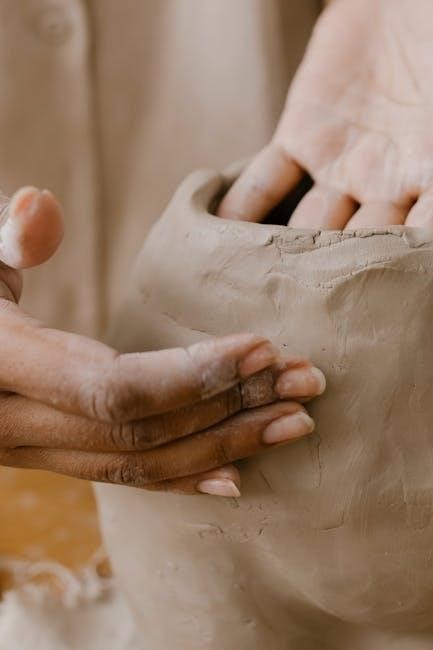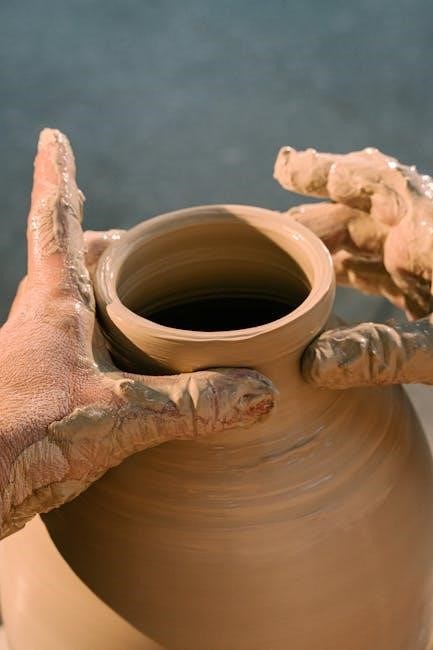Yamaha P-115 Manual: A Comprehensive Guide
Welcome! This guide provides a comprehensive overview of the Yamaha P-115 digital piano․ We’ll explore its features, setup, troubleshooting, and more․ Access the owner’s manual online or download it for offline reference․ Get the most from your P-115!
The Yamaha P-115 is a digital piano designed to offer a blend of authentic piano experience and modern digital functionality․ It’s an 88-key instrument suitable for musicians of varying skill levels, from beginners to experienced players․ Its compact design makes it ideal for home use, practice, or even small performances․ The P-115 boasts a range of features including different instrument voices, built-in rhythms, and connectivity options․
One of the key features of the P-115 is its Graded Hammer Standard (GHS) keyboard action․ This action simulates the feel of an acoustic piano, with heavier touch in the lower register and lighter touch in the higher register, allowing for expressive playing․ The piano also includes improved piano sounds and enhanced speaker system compared to previous models․
Furthermore, the P-115 offers USB connectivity, enabling connection to computers and smart devices․ This opens up possibilities for using music software, recording performances, and utilizing apps like Yamaha’s Digital Piano Controller for enhanced control and customization of the instrument’s settings․ With its combination of features, sound quality, and portability, the Yamaha P-115 represents a versatile and accessible option for digital piano enthusiasts․
Accessing the Owner’s Manual
The Yamaha P-115 owner’s manual is an invaluable resource for understanding and maximizing the potential of your digital piano․ It provides detailed information on every aspect of the instrument, from basic setup to advanced features and troubleshooting tips; Fortunately, accessing the manual is quite straightforward․
One of the easiest ways to obtain the P-115 manual is through Yamaha’s official website․ Navigate to the support section and search for the P-115 model․ You should find the owner’s manual available for download in PDF format․ This allows you to view the manual on your computer, tablet, or smartphone, or even print it out for convenient reference․
Alternatively, many online manuals directories also host the Yamaha P-115 manual․ A simple web search for “Yamaha P-115 owner’s manual PDF” will yield several results․ Be sure to download the manual from a reputable source to ensure you’re getting the correct and complete version․ The manual is a key component of the P-115 package․
The manual can also be accessed through qualified service technicians of the Yamaha company․
Understanding the P-115’s Features
The Yamaha P-115 is packed with features designed to enhance your playing experience, whether you’re a beginner or a seasoned pianist․ Understanding these features is key to unlocking the full potential of the instrument․ Let’s delve into some of the most notable aspects․
First and foremost, the P-115 boasts Yamaha’s Graded Hammer Standard (GHS) keyboard action, which provides a realistic piano feel with heavier touch in the lower register and lighter touch in the higher register․ This allows for expressive and nuanced playing․ The instrument also offers a variety of voices, including grand pianos, electric pianos, organs, and more, providing versatility for different musical styles․
Furthermore, the P-115 features built-in rhythms and accompaniments, allowing you to play along with a virtual band․ These rhythms can add depth and excitement to your practice sessions and performances․ The “pianist style” function automatically adds accompaniment based on your playing, creating a full ensemble sound․
Connectivity is another strong point, with a USB-to-host port for connecting to computers and smart devices․ This enables you to use music software, apps, and online resources to expand your musical horizons․ The P-115 is a full-featured digital piano․
Panel Controls and Terminals Overview
Familiarizing yourself with the Yamaha P-115’s panel controls and terminals is essential for efficient operation and seamless integration with other devices․ The control panel is intuitively designed, allowing for easy access to the instrument’s various functions․ Let’s explore the key elements․
The power button, typically located on the left side of the panel, controls the instrument’s on/off state․ Volume control allows you to adjust the overall loudness of the P-115․ Voice selection buttons enable you to choose from the available instrument sounds, such as grand piano, electric piano, and organ․ Dedicated buttons provide access to the rhythm and accompaniment features, allowing you to start, stop, and adjust the tempo of the built-in rhythms․

The P-115 also features a metronome function, which can be activated and adjusted using the corresponding controls․ Transpose and tuning settings enable you to adjust the pitch of the keyboard to suit your needs․ On the rear panel, you’ll find the DC IN jack for connecting the power adapter, as well as headphone jacks for silent practice․
The USB-to-host port allows for connection to computers and smart devices, while the AUX OUT jacks enable you to connect to external speakers or recording equipment․ Understanding these controls makes playing easier․
Setting Up Your P-115

Proper setup is crucial to enjoying your Yamaha P-115․ First, carefully unpack the instrument and ensure all components are present, including the power adapter, music rest, and owner’s manual․ Place the P-115 on a stable, level surface, such as a dedicated keyboard stand or a sturdy table․
Next, connect the power adapter to the DC IN jack on the rear panel and plug it into a suitable power outlet․ Ensure the power switch is in the “off” position before plugging in․ Once connected, turn the power switch to the “on” position․
Attach the music rest to the designated slots on the top of the P-115․ This will provide a convenient place to hold your sheet music or tablet․ If you plan to use headphones, plug them into one of the headphone jacks on the front or rear panel․ Adjust the volume to a comfortable level․
For optimal sound quality, consider connecting the P-115 to external speakers using the AUX OUT jacks․ This is especially useful for performances or when practicing with others․ Finally, refer to the owner’s manual for detailed instructions on adjusting settings such as touch sensitivity, tuning, and temperament to suit your playing style․
Using the Digital Piano Controller App
The Yamaha P-115 can be enhanced through the Digital Piano Controller app, available for iOS devices․ This app provides a user-friendly interface for controlling various settings and features of your P-115, offering a more intuitive experience than the onboard controls alone․
To begin, download and install the “Digital Piano Controller” app from the App Store․ Connect your iOS device to the P-115 using a USB cable and a Lightning-to-USB adapter (if needed)․ Ensure that the P-115 is powered on․
Once connected, launch the app․ The app should automatically detect your P-115․ Within the app, you can adjust settings such as instrument voices, metronome tempo, reverb, and chorus effects․ The app also allows you to record your performances directly to your iOS device․
Furthermore, the Digital Piano Controller app can be used to fine-tune the P-115’s tuning and temperament, allowing for customized scales and tunings to suit various musical styles․ Explore the app’s features to discover new ways to interact with your P-115 and unlock its full potential․ Refer to the app’s built-in help resources for detailed instructions․
Troubleshooting Common Issues
Encountering issues with your Yamaha P-115 is not uncommon; Here are some troubleshooting tips for common problems:
No Sound: First, ensure the P-115 is powered on and the volume is turned up․ Check that headphones are not plugged in, as this will mute the speakers․ If using external speakers, verify the connections․ Also, ensure the local control is on․
Distorted Sound: Reduce the volume to see if the distortion disappears․ If using external speakers, they may be overloaded or damaged․ Test with different speakers or headphones․
Certain Keys Not Working: This could indicate a loose internal connection․ Consult the service manual or contact a qualified technician․ A loose cable connector or a dry joint wire on the cable connector itself at either end of the cable may be the reason․
Connectivity Problems: Ensure the USB cable is properly connected․ Install the Yamaha USB-MIDI driver on your computer․ Restart both the P-115 and your computer․ Check for driver updates․
App Connectivity Issues: Make sure your iOS device is compatible and the Digital Piano Controller app is up to date․ Verify the USB connection and restart the app․
MIDI Connectivity and Functionality
The Yamaha P-115 offers robust MIDI (Musical Instrument Digital Interface) connectivity, allowing you to integrate it with computers, tablets, and other MIDI-compatible devices․ Using the USB to Host port, you can connect the P-115 to your computer for recording, sequencing, and using virtual instruments․
To utilize MIDI functionality, you may need to install the Yamaha USB-MIDI driver on your computer․ This driver enables seamless communication between the P-115 and your music software․
The P-115’s MIDI capabilities allow you to control external sound modules and synthesizers, as well as be controlled by external sequencers or DAWs (Digital Audio Workstations)․ You can record your performances as MIDI data, edit them in your software, and play them back through the P-115’s sound engine or external devices․
Consult the P-115 MIDI Reference manual for detailed information on MIDI implementation, including control change messages and system exclusive data․ This manual can be found on the Yamaha Downloads website by searching for your model․
Connecting to External Devices
The Yamaha P-115 offers versatile connectivity options for integrating with various external devices․ The AUX OUT jacks allow you to connect to external amplifiers, mixers, or recording devices for enhanced sound projection or recording purposes․ This is particularly useful for performances or studio applications where the built-in speakers may not suffice․
For connecting to a computer or smart device, the USB TO HOST port provides a direct digital connection․ This enables MIDI communication for recording and controlling virtual instruments, as well as audio transfer depending on your device and software capabilities․ Ensure you have the necessary drivers installed for optimal performance․
Additionally, the P-115 features a headphone jack for private practice․ When headphones are connected, the built-in speakers are automatically muted, allowing you to play without disturbing others․ This is ideal for late-night practice sessions or environments where quiet operation is essential․
Remember to consult the owner’s manual for specific instructions and compatibility information regarding different types of external devices․ Correct connections ensure optimal sound quality and prevent potential damage to your equipment․
Maintenance and Care
Proper maintenance is crucial for prolonging the life and ensuring optimal performance of your Yamaha P-115․ Regularly clean the keyboard with a soft, dry cloth to remove dust, fingerprints, and other debris․ Avoid using harsh chemicals or abrasive cleaners, as these can damage the finish and keys․
Protect your P-115 from extreme temperatures, humidity, and direct sunlight․ These conditions can cause warping, cracking, and other damage to the instrument․ When not in use, consider covering the keyboard with a dust cover to prevent dust accumulation․
Inspect the cables and connectors periodically for any signs of wear or damage․ Replace any damaged cables immediately to prevent electrical hazards or signal loss․ Ensure that all connections are secure and properly seated․
If you encounter any mechanical or electrical issues, do not attempt to repair the P-115 yourself․ Contact a qualified service technician for assistance․ Unauthorized repairs can void your warranty and potentially cause further damage;
Following these simple maintenance and care guidelines will help keep your Yamaha P-115 in excellent condition for years to come․
Additional Resources and Support
Beyond the owner’s manual, Yamaha offers a variety of resources to help you get the most out of your P-115․ The Yamaha website provides access to FAQs, troubleshooting guides, and software updates․ You can also find helpful tutorials and demonstrations on the Yamaha MusicSoft website․

For more in-depth assistance, consider contacting Yamaha customer support․ Their knowledgeable staff can answer your questions and provide guidance on a wide range of topics․ You can reach them by phone, email, or through their online support portal․
The Yamaha website also features a searchable database of authorized service centers․ If your P-115 requires repair or maintenance, these centers have the expertise and equipment to get the job done right․

In addition to Yamaha’s official resources, there are many online communities and forums dedicated to Yamaha digital pianos․ These communities can be a great source of information, tips, and support from other P-115 owners․ Consider joining a forum or online group to connect with fellow musicians․
By utilizing these additional resources and support channels, you can enhance your P-115 experience and ensure that you have the assistance you need․

Leave a Reply
You must be logged in to post a comment.